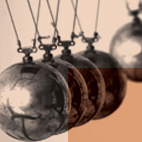|
During the negotiations that took place prior to his appointment as professor, Mundry had made two demands for facilities. Firstly, he needed greenhouses which, like those at the Max Planck Institute in Tübingen, were directly adjacent to the scientific laboratories. Secondly, he insisted that ultimately Biology should be housed on the university campus in Vaihingen, like Physics and Chemistry.
Since 1971 the provisional institute building had been a former varnish factory in Stuttgart-Wangen (Ulmer Straße 227). For the first time the staff and institutes of Botany and Zoology were united. Whereas the move to Vaihingen took around 15 years to materialise, the demand for suitable greenhouses was fulfilled more quickly. Yet there was a snag. Mundry's own designs were implemented fairly satisfactorily, but in the "wrong" place. Of all places, the site of Stuttgart's rival university, Hohenheim, became the home of the tobacco mosaic virus from the mid-1970s onwards. This was exacerbated by the distance between the institute and the greenhouses. There was only additional room for a few research plants in the cellar of the building in Wangen, where the biologists had installed a culture chamber with air conditioning and artificial lighting.
Things only improved with the move to the Vaihingen campus, which took place in two stages in 1987 and 1989 in conjunction with the establishment of the new course of Technical Biology. The construction of new greenhouses was delayed until as late as 1993, shortly after Mundry became an emeritus professor. The botanical test centre, inaugurated one year later, came very close to being exactly what he had wanted. Like in Tübingen and Hohenheim, the laboratories and greenhouses were now directly next door to each other, as close as could be imagined. The steel struts of the two-storey complex were attached to the roof of the Science Centre with a helicopter. The words read at the topping-out ceremony were "I look at the expansive countryside, researching here must fill you with pride" – and the result is indeed a test centre with a unique character of its own.
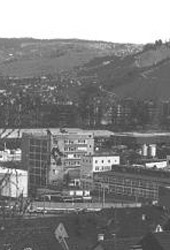 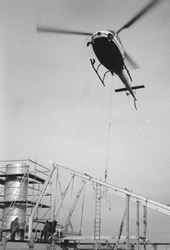 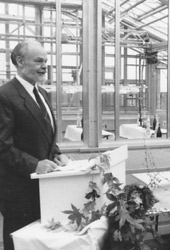 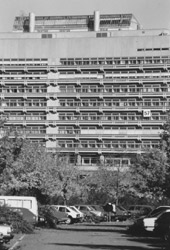 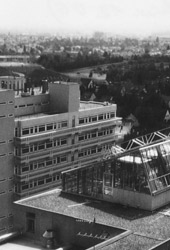
|
 |
|
